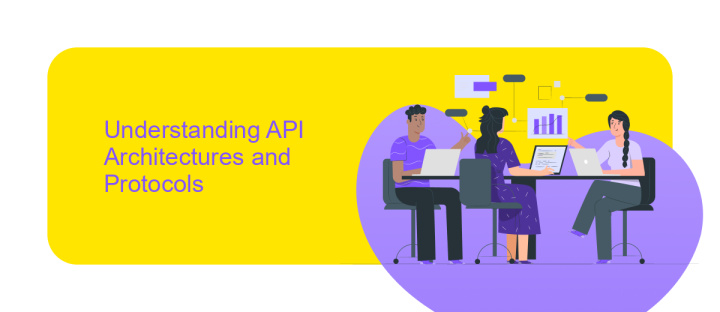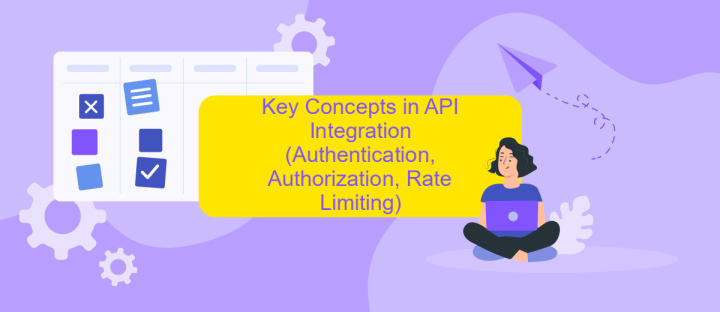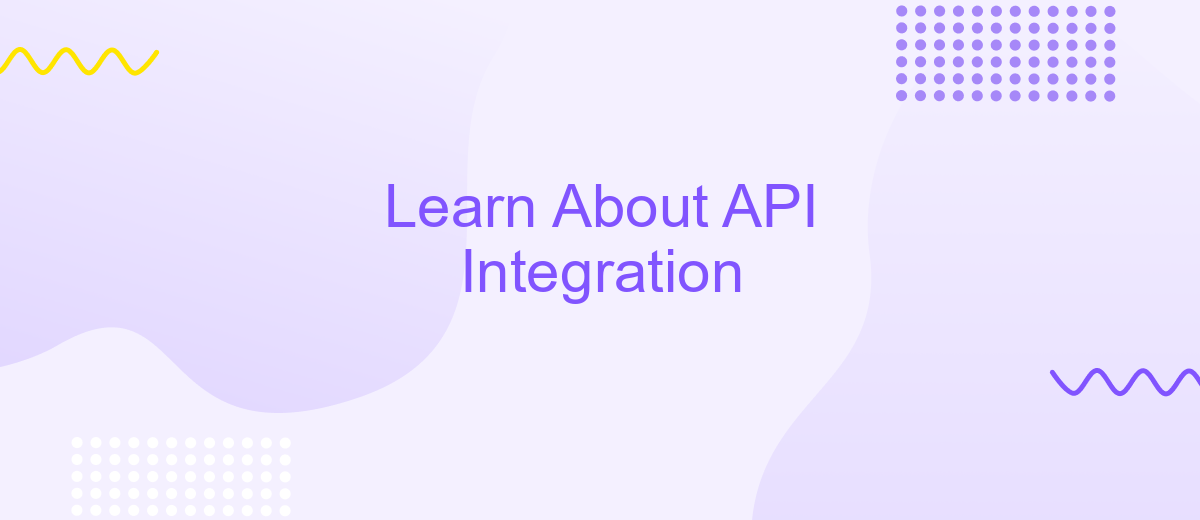Learn About API Integration
API integration is a crucial aspect of modern technology, enabling seamless communication between different software applications. By allowing systems to exchange data and functionality, APIs enhance efficiency and open up new possibilities for innovation. This article explores the fundamentals of API integration, its benefits, and how it can transform business operations, making processes more streamlined and responsive to the ever-evolving digital landscape.
Introduction to APIs and Integration
APIs, or Application Programming Interfaces, are essential tools that enable different software applications to communicate with each other. They serve as bridges, allowing data and functionalities to be shared across various platforms and systems. By using APIs, developers can enhance the capabilities of their applications without having to build everything from scratch. This leads to more efficient development processes and innovative solutions.
- APIs allow seamless integration between different software systems.
- They provide a standardized way to access and manipulate data.
- APIs enable developers to leverage third-party services and functionalities.
- They facilitate automation by connecting disparate systems.
- APIs contribute to creating scalable and flexible software architectures.
Integration using APIs is a cornerstone of modern software development. It empowers businesses to connect their internal systems with external services, creating a cohesive digital ecosystem. This interconnectedness not only streamlines operations but also opens up opportunities for innovation and growth. As technology continues to evolve, mastering API integration becomes increasingly crucial for organizations aiming to stay competitive and responsive to market demands.
Understanding API Architectures and Protocols

API architectures and protocols form the backbone of seamless integration between different software systems. At their core, APIs (Application Programming Interfaces) define the rules and conventions for interacting with a software component. There are several types of API architectures, with REST (Representational State Transfer) being the most prevalent due to its simplicity and scalability. RESTful APIs use HTTP requests to access and manipulate data, making them ideal for web services. Another popular architecture is SOAP (Simple Object Access Protocol), which relies on XML-based messaging and is often used in enterprise environments where security and transaction compliance are critical.
Understanding the protocols that underpin these architectures is crucial for effective API integration. HTTP/HTTPS are commonly used protocols for RESTful APIs, ensuring secure data exchange over the web. For those looking to simplify the integration process, services like ApiX-Drive offer valuable solutions. ApiX-Drive provides a platform for connecting various applications without the need for extensive coding, streamlining the integration process. By leveraging such services, businesses can focus on their core operations while ensuring robust and efficient API interactions.
Key Concepts in API Integration (Authentication, Authorization, Rate Limiting)

API integration is a crucial aspect of modern software development, enabling different systems to communicate and share data seamlessly. Understanding key concepts like authentication, authorization, and rate limiting is essential for effective API management.
- Authentication: This process verifies the identity of a user or system, ensuring that they are who they claim to be. Common methods include API keys, OAuth tokens, and JWTs (JSON Web Tokens).
- Authorization: Once authenticated, authorization determines what actions the authenticated user or system is allowed to perform. This step ensures that only authorized entities can access certain resources or perform specific operations.
- Rate Limiting: This technique controls the number of requests a user or system can make to an API within a given time frame. It helps prevent abuse, ensures fair usage, and maintains the API's performance and stability.
Mastering these concepts is vital for developers to build secure, efficient, and reliable applications that interact with APIs. Proper implementation of authentication, authorization, and rate limiting safeguards data and optimizes resource usage, enhancing the overall user experience.
Tools and Techniques for API Integration

API integration is a crucial aspect of modern software development, enabling diverse systems to communicate and share data seamlessly. To achieve effective integration, developers rely on a variety of tools and techniques tailored to specific project needs. Selecting the right tools can significantly enhance efficiency and reduce development time.
One popular approach is using middleware platforms, which act as intermediaries to facilitate communication between different APIs. These platforms often provide pre-built connectors and templates, simplifying the integration process. Additionally, developers can utilize API management tools to monitor, analyze, and secure API interactions, ensuring optimal performance and reliability.
- API gateways for managing traffic and enforcing security policies
- Development frameworks like Node.js or Django for building API endpoints
- Automation tools such as Postman or Swagger for testing and documentation
- Cloud-based services like AWS Lambda for serverless API integration
Choosing the appropriate techniques depends on the specific requirements of the project, including scalability, security, and performance. By leveraging the right combination of tools, developers can streamline API integration, ensuring robust and efficient communication between systems. This strategic approach not only enhances functionality but also drives innovation in software solutions.
- Automate the work of an online store or landing
- Empower through integration
- Don't spend money on programmers and integrators
- Save time by automating routine tasks
Best Practices and Common Pitfalls in API Integration
Effective API integration is crucial for seamless data exchange and efficient system operation. One best practice is to thoroughly document your API, ensuring all endpoints, parameters, and response formats are clearly defined. This reduces errors and facilitates smoother integration. Additionally, implementing robust authentication and authorization mechanisms is vital to protect sensitive data and prevent unauthorized access. Regularly testing your API with real-world scenarios can uncover potential issues early, allowing for timely resolutions. Tools like ApiX-Drive can simplify integration processes by providing user-friendly interfaces and automation capabilities, making it easier to connect various applications without extensive coding knowledge.
However, common pitfalls in API integration include neglecting version control, which can lead to compatibility issues when updates occur. Overlooking error handling is another frequent mistake; without proper error management, debugging can become complex and time-consuming. Additionally, failing to monitor API performance can result in unnoticed bottlenecks or downtime, affecting user experience. It's essential to establish monitoring and logging practices to detect and address issues promptly. By adhering to these best practices and being aware of common pitfalls, you can ensure successful API integrations that enhance your system's functionality and reliability.
FAQ
What is API integration and why is it important?
How can I get started with API integration for my business?
What are some common challenges in API integration?
How does API integration improve business processes?
What should I consider when choosing an API integration tool?
Apix-Drive is a universal tool that will quickly streamline any workflow, freeing you from routine and possible financial losses. Try ApiX-Drive in action and see how useful it is for you personally. In the meantime, when you are setting up connections between systems, think about where you are investing your free time, because now you will have much more of it.


